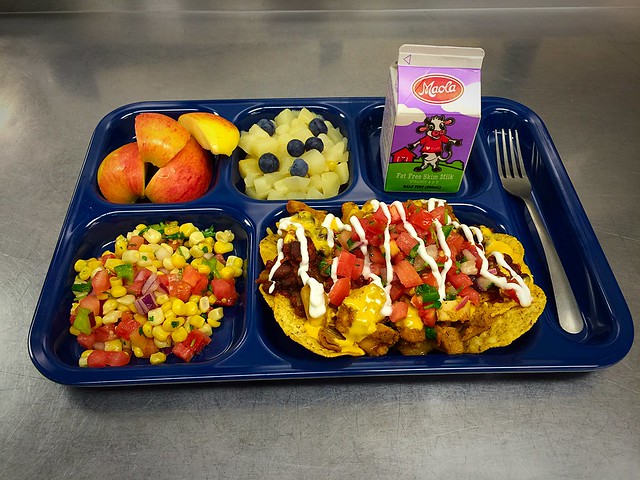
What do apples, beef and cheese have in common? These ABCs are all favorites with children and they are all a part of the USDA Foods program thanks to collaborative partnerships between the United States Department of Agriculture (USDA) and American farmers and businesses.
In celebration of National Agriculture Day, today, we are sharing one way that the Food and Nutrition Service (FNS) provides high-quality, nutritious products to the Child Nutrition Programs through USDA Foods.
USDA-purchased foods have been finding their way to children’s lunch trays for more than 70 years. USDA has made great strides in this program over the years by increasing the variety and nutritional quality of the offerings to better meet the needs of schools districts across the country. “Buy American” is a guiding tenet of school meal programs, and USDA Foods inherently support this requirement.
USDA Foods are required to be 100 percent American-grown and produced. USDA Foods support American agriculture and industry while enhancing school meals by providing the nutritious foods kids need, including a variety of fresh, frozen, canned and dried fruits and vegetables; whole grain and whole grain-rich options; proteins including lean meats, poultry, fish and legumes; and dairy.
States and school districts can choose from more than 200 options, which have been reformulated in recent years to reduce sodium, sugar, and fat, and incorporate USDA Foods into their menus alongside commercial products. On a given day, USDA Foods comprise about 15 to 20 percent of the food on a lunch tray and in fiscal year 2017, USDA purchased more than $1.6 billion of food for child nutrition programs.
“The National School Lunch Program represents one of our primary selling channels, a key focus for our growth as we provide nutritious products that support school foodservice programs and feed students throughout the country,” explained Scott Tomes, Chief Revenue Officer for Bongards Creameries, a small business dairy co-op founded in 1908 and based in Minnesota that has been partnering with the government for more than 70 years. “The USDA Foods program ensures that our students are provided healthy, nutritious, cost-effective meals, while ensuring the sourcing of those foods supports American farmers and producers.”
JTM Food Group, a family-owned and operated corporation based in Ohio, entered the USDA Foods in Schools program in 1992 thanks to a business opportunity from Indianapolis Public Schools. The school district was looking to provide students with pork BBQ using USDA Foods pork.
“JTM has always been proud to partner with USDA to produce products that are on trend and in high demand. We are experiencing the most incredible growth in our 44 year history, having just completed construction of a new robotic distribution center and 275,000 square foot production facility – with room for additional growth. Our strategic plan will provide employment to a significant number of additional jobs over the next 10 years,” said JTM’s Director of Education Sales, Carole Erb.
In addition to providing USDA Foods for the Child Nutrition Programs, USDA procures food from domestic producers for the Emergency Food Assistance Program (TEFAP), Commodity Supplemental Food Program (CSFP), Food Distribution Program on Indian Reservations (FDPIR) and food for use during disasters. The USDA contracts with several hundred companies across the nation to provide the variety and types of foods that can meet the needs of the populations served by all of these programs. Foods range from traditional foods for FDPIR (bison, wild rice) to fresh apples for schools and hot cereal for CSFP.
While forming partnerships with American businesses, the USDA Foods program itself is a partnership between two USDA agencies: the Agricultural Marketing Service (AMS) and the Food and Nutrition Service (FNS). AMS purchases products through a competitive process among approved vendors, while FNS works with state agencies to distribute the food.
USDA is grateful for vendors who are committed to providing quality American grown products to help feed schoolchildren from Alaska to the U.S. Virgin Islands.
